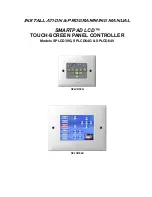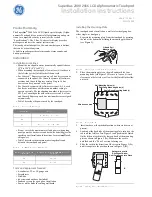
Connecting the TV
21
Conn
ectin
g the
TV
Basic Connections
The way in which you connect your TV will vary, depending on how your
home receives a signal (antenna and satellite; cable and cable box) and
whether or not you plan to connect a VCR.
If you are connecting a VCR
s
See the connection described on pages 33 and 34.
Cable System or
VHF/UHF
For best results, use this connection if:
s
You have a cable and/or an antenna.
(This is convenient if you are using a separate rooftop antenna to receive
additional channels that are not provided by your cable TV company.)
s
You do not have a cable box or VCR. (If you have a cable box, see
pages 22 and 23. If you have a VCR, see pages 33 and 34.)
Notes on Using This Connection
If You Are Connecting...
See Page
Cable System or VHF/UHF
❑
No cable box or VCR
Cable Box and Antenna
❑
Cable box unscrambles only some
channels (usually premium channels)
❑
No VCR
Cable Box
❑
Cable box unscrambles all channels
❑
No VCR
Satellite Receiver
Digital Cable Box or Digital Satellite Receiver
Equipment with HDMI Connection
Equipment with DVI Connection
Equipment with Digital Audio (OPTICAL)
Antenna System
Cable Type
Connect As Shown
Cable TV (CATV)
and Antenna
Antenna cable
CATV cable
To Do This...
Do This ...
Switch
the TV’s input between
the cable and antenna
Press
ANT
to switch back and forth between the TV’s VHF/UHF and CABLE inputs.
Do not use an indoor antenna, which is especially susceptible to radio noise.
















































